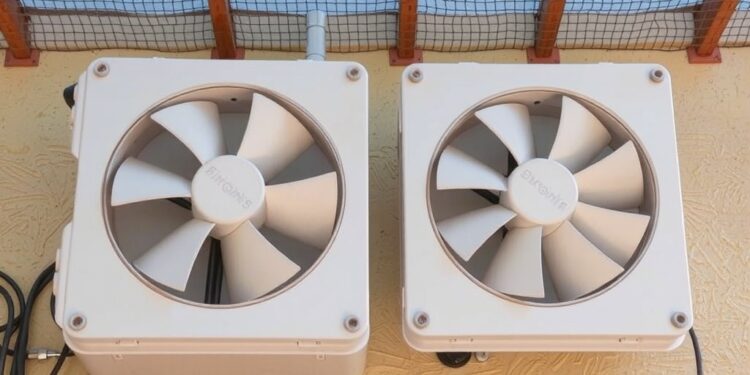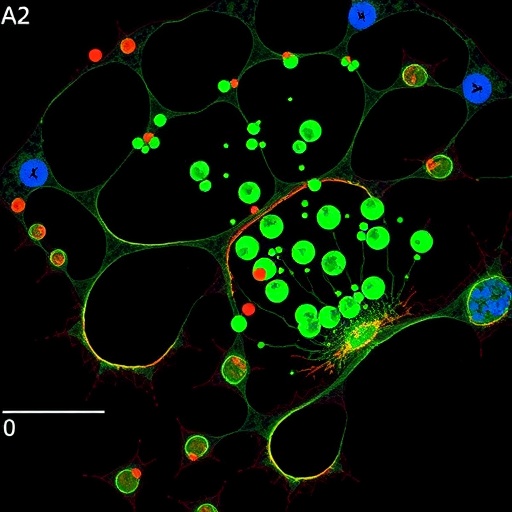
Electric fans have long been regarded as a staple in households, particularly during the oppressive heat of summer months. However, their efficacy, especially among older adults, is now under scrutiny. A study published in the prestigious Journal of the American Medical Association has brought to light concerning findings regarding the ability of fans to provide adequate cooling relief for older individuals, a demographic known for its compromised physiological responses to high temperatures. Conducted under simulated extreme indoor conditions, the research explored the impact of electric fans on body core temperature and heart rate among participants aged between 65 and 85 years.
In this investigation, 18 older adults were subjected to an environment simulating sweltering indoor heat—specifically, a relentless 36°C temperature accompanied by 45 percent relative humidity. Over the course of three separate test days, participants experienced various conditions: one day without a fan, a second day with a fan set to a common household air speed of two meters per second, and a third day with the fan operating at maximum capacity, blowing air at four meters per second. The expectation was that the movement of air might improve comfort levels and physiological responses, but the results proved to be surprising and concerning.
The vital signs monitored throughout these tests revealed a distressing outcome. Regardless of whether participants were subjected to fan-assisted cooling or not, their average body core temperature remained stubbornly high at 38.3°C, paired with a heart rate of 100 beats per minute. While anecdotal comfort may have improved ever so slightly with the fan’s aid, the physiological strain—a critical factor for older adults—did not show any meaningful reduction. This raises significant alarm regarding the traditional wisdom that assumes any airflow is beneficial when it comes to cooling during extreme heat.
Dr. Fergus O’Connor, the lead researcher from Griffith University’s School of Health Sciences and Social Work, emphasized a crucial aspect: as individuals age, their bodies lose the ability to efficiently regulate temperature through sweating. This loss is particularly pronounced for those in their 60s and beyond but can begin even in one’s 30s and 40s. The study highlights a “double whammy”; not only does sweat production decline, but older adults also experience a diminished awareness of heat stress, which could lead to severe health consequences.
The implications of these findings are vivid and alarming, particularly for regions like Australia, where extreme heat is known to claim more lives annually than all other natural disasters combined. In Queensland alone, statistics indicate that over 100 lives are lost each year due to high-temperature exposure. The inability of older individuals to maintain safe body temperatures can lead to dangerous conditions, including heat cramps, heat exhaustion, and even heat stroke.
Dr. O’Connor’s insights point towards a critical need for society to rethink strategies for cooling interventions, particularly as climate change is expected to exacerbates the frequency of extreme heat events. It is crucial for health authorities and local governments to develop effective, sustainable cooling solutions that take into account the unique physiological needs of older adults. Bringing awareness to this issue could potentially pave the way for public health policies aimed at reducing heat-related illnesses in vulnerable populations.
The research takes the examination of cooling equipment specifics further, revealing that in particularly arid southern states, such as those experiencing dry temperatures in the region of 42°C with minimal humidity, any sweat generated is likely to evaporate swiftly, limiting the cooling benefits typically associated with sweating. In these situations, a fan does little more than circulate already warm air across dry skin, thereby creating a false perception of relief, rather than fostering true cooling.
Conversely, in high-humidity areas like tropical Queensland, electric fans can function to evaporate moisture from the skin to some extent, providing minimal but tangible relief—yet only if the ambient temperature is not exceedingly high. This distinction underscores the need for tailored recommendations based on local climate conditions when advising on cooling methods for older adults.
As the study concludes, it becomes increasingly evident that relying solely on electric fans, particularly in the extreme ranges of heat and humidity tested, is insufficient to combat the physiological strains posed to older adults in such environments. Although fans do not exacerbate heat strain, they cannot be considered a substitute for more effective cooling methods.
With air conditioning units being a prohibitive expense for many, Dr. O’Connor advocates for a more sustainable use of air conditioning systems. His recommendation suggests setting air conditioning units to slightly higher temperatures—around 26 to 28 degrees Celsius—as well as operating them in conjunction with fans. This dual approach can enhance cooling while also reducing energy costs, making it a more viable solution for those concerned about financial implications.
In light of the critical nature of this research, it is clear that more robust efforts must be taken to protect and support older adults when dealing with extreme heat scenarios. This study serves as an urgent reminder of the vulnerability of this demographic in the face of escalating temperatures and demonstrates that innovative, practical solutions must be prioritized to avert health crises during the sweltering summer months and beyond.
This research accentuates the intersection of health, climate, and public policy. It calls upon both scientists and policymakers to engage collaboratively in finding effective, sustainable solutions, thereby improving the living conditions and survival prospects of older adults when temperatures surge. As society grapples with the ongoing challenges presented by climate change, adapting our strategies for health emergencies will be paramount in safeguarding the well-being of our most vulnerable populations.
Subject of Research: Older adults’ response to electric fans in extreme heat
Article Title: Effect of Electric Fans on Body Core Temperature in Older Adults Exposed to Extreme Indoor Heat
News Publication Date: 17-Oct-2024
Web References: https://jamanetwork.com/journals/jama/fullarticle/2825091
References: https://doi.org/10.1001/jama.2024.19457
Image Credits: N/A
Keywords: Health, Temperature Regulation, Heat Stress, Older Adults, Cooling Interventions, Public Health Policy, Climate Change.
Tags: cooling effectiveness of fans during heat waveselectric fans and older adultsfan usage and comfort levels in elderlyheart rate response to heat in seniorshousehold cooling solutions for seniorshumidity effects on cooling with fansimpact of air movement on body temperatureindoor heat stress and fansJAMA study on heat and agingphysiological responses to heat in elderlystudy on fan efficacy in extreme heatsummer heat relief for older individuals





